The Pixel Fold is here and it's a welcome addition to the foldable category
Welcome to the foldable party Google
The Google Pixel Fold is finally here. After months of leaks and anticipation, Google has just unveiled the latest addition to the foldable category and, in typical Google fashion, it does some things really well but is lacking in others. However, the parts Google gets right could end up transforming the foldable experience.
Samsung has kept the foldables category growing as other companies faltered over the past few years, and while it's taken Google longer than we thought it would, the Pixel Fold is – on paper at least – a very worthy competitor. Most importantly, it provides much-needed competition for Samsung and is exactly what’s needed to push the industry toward the next generation of foldable devices.
Welcome to the foldable party Google; the Pixel Fold is exactly what we’ve been waiting for.
Design & Hinge
The Pixel Fold is closer to the design of the Oppo Find N2 versus the Galaxy Z Fold 4 and resolves some of the biggest complaints of the latter. Instead of a narrow front display, the Pixel Fold cover display is more similar to a regular smartphone. The end result is a more usable front display than we’ve been used to from foldable devices.
I’ve used the Galaxy Fold range since the first model was announced, and while I personally like the cover display on Samsung’s foldables, the criticism is justified. It’s a little on the cramped side but the Pixel Fold – and others in this next generation of foldables – are aiming to resolve this.
One of the things that Google has proudly touted is the custom-built “Fluid Friction” hinge, which Google says is the most durable hinge of any foldable phone to date. This new hinge does bring some unique innovations to the foldable space, as by moving the hinge out from under the display entirely, Google was able to improve the dust resistance and reduce the Pixel Fold’s thickness.
Display
The Pixel Fold sports a front 5.8-inch display with a 17.4:9 aspect ratio, which is the closest we’ve come to the traditional 16:9 aspect ratio you’ll find on most devices. When you unfold the Pixel Fold, it’ll open up to a 7.6-inch display with a 6:5 aspect ratio. The display also supports up to 1,000 nits HDR brightness (which rises to 1,450 nits peak brightness) and up to 120Hz refresh rate.
Yes, you’ll hear a lot about the bezels on the Pixel Fold, which are a tad thicker than some would have hoped. Having used a foldable for years, I can safely say that it doesn’t matter. Bezels mean a reduced amount of mistouches and better palm rejection, ultimately leading to a more enjoyable display experience. Much like the Galaxy Z Fold 4 and others, the hinge also enables a new Tabletop mode that allows you to use the device unfolded like a natural tripod.
Camera
Cameras have been my biggest letdown when it comes to foldables. In the quest for a big-screen experience that folds, Samsung (and others) have opted to prioritize the screen over the camera, but the Pixel Fold could be the lightning bolt that the category needs. Much like it did with the regular smartphone, the Pixel Fold is likely going to force Samsung and others to improve the cameras on their foldable devices, much to the benefit of foldable-phone enthusiasts.
Google is known for doing wondrous things using AI, machine learning, and other software smarts, and this is why I’m so excited by Pixel Fold’s camera. On paper, the hardware is very capable: the triple camera is led by a 48MP main camera with pixel binning and is paired with a 10.8MP ultrawide camera and 10.8MP telephoto camera that offers 5x optical zoom.
While Samsung throws the biggest hardware numbers into its Galaxy S series – specifically in devices like the Galaxy S23 Ultra – this isn’t Google’s style. Instead, software is where Google’s cameras shine and the Pixel Fold looks like it could live up to its billing of the best camera on a foldable phone.
Even though I love my foldable devices, they definitely pale in comparison to regular smartphones when it comes to camera quality. The Pixel Fold will change this, especially thanks to the addition of Super Res Zoom that combines the 5x telephoto and Google’s advanced computational photography to deliver up to 20x zoom with little to no loss in quality. Google says it delivers the highest quality photo at any zoom range to 20 times on any foldable phone.
Like every other book foldable, you can also open the Pixel Fold, turn it around, take a “selfie” using the rear camera, and use the cover display as a viewfinder. The hinge and ability to stop the action of unfolding the Pixel Fold at any angle also means you can use the rear camera and rear display to take group selfies, or for astrophotography. When you want to trigger the countdown or take a picture with the rear camera, simply press the shutter button, raise your hand, or just ask Google Assistant.
Pixel Fold software
For the past six to 12 months, whenever I’ve been asked, I would say that I wasn’t excited about the Pixel Fold because Samsung has every other company beat when it comes to big-screen software and multitasking. Then Google unveiled some interesting software features that make the Pixel Fold stand out. All of these are made possible by Google’s own Tensor G2 chipset and Titan M2 security key, alongside 12GB of RAM and either 256GB or 512GB of storage.
Case in point: we’ve all been traveling and struggled to speak the local language. For a few years, Google’s Live Translate feature meant you could use Google Translate on your phone and pass it back and forth to someone else and Google’s smarts would do the translation. As Google admitted, however, it can be awkward to stand close to a complete stranger in order to have a conversation. This is where Dual-Screen Interpreter Mode comes in, a feature that adds another use-case to having a foldable phone.
With the Pixel Fold, it’s far easier: open your phone and the Google Translate app. You then speak in your native tongue, mine being English, and the Pixel Fold will simultaneously translate to another language, both in audio through the speaker and in big text on the outer screen. Then the other person can speak in their native tongue and it’ll be translated onto the inner screen. It works very similar to the way a teleprompter does and it’s a very natural use case for the second screen experience.
Google has also optimized over 50 of its own apps for the big screen experience – including things like Gmail, YouTube, Meet, etc. – and worked with developer partners to optimize the top apps across different categories. These include apps like Canva, Calm, Evernote, Disney Plus, Netflix, Zoom, Adobe, and eBay, as well as games like Minecraft, Asphalt 9, Clash of Clans, and Diablo Immortal.
In preparation for the Pixel Fold – and other big-screen Android devices – Google has worked on optimizing and tweaking the big-screen Android experience. This includes borrowing the taskbar from the Galaxy Z Fold 4, which works just like a PC taskbar or the Mac dock and lets you swipe up from the bottom of the screen to show a few pinned apps which can then be launched in multitasking mode.
How well do these features work? The jury is out until we can test the Pixel Fold in detail, but it’s great to see Google enter the foldable foray and we can’t wait to see it in action.
Pixel Fold Price & Availability
The Pixel Fold is open for pre-order today and will be available on June 27. It is available in two colors: Obsidian (a dark color) and Porcelain (white) and costs $1,799 in the US for the version with 256GB of RAM.

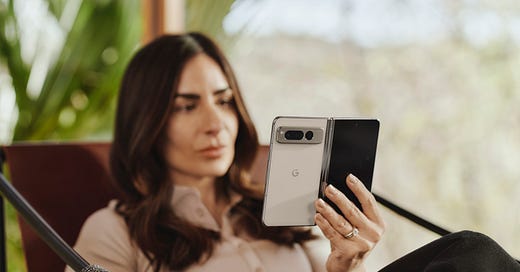



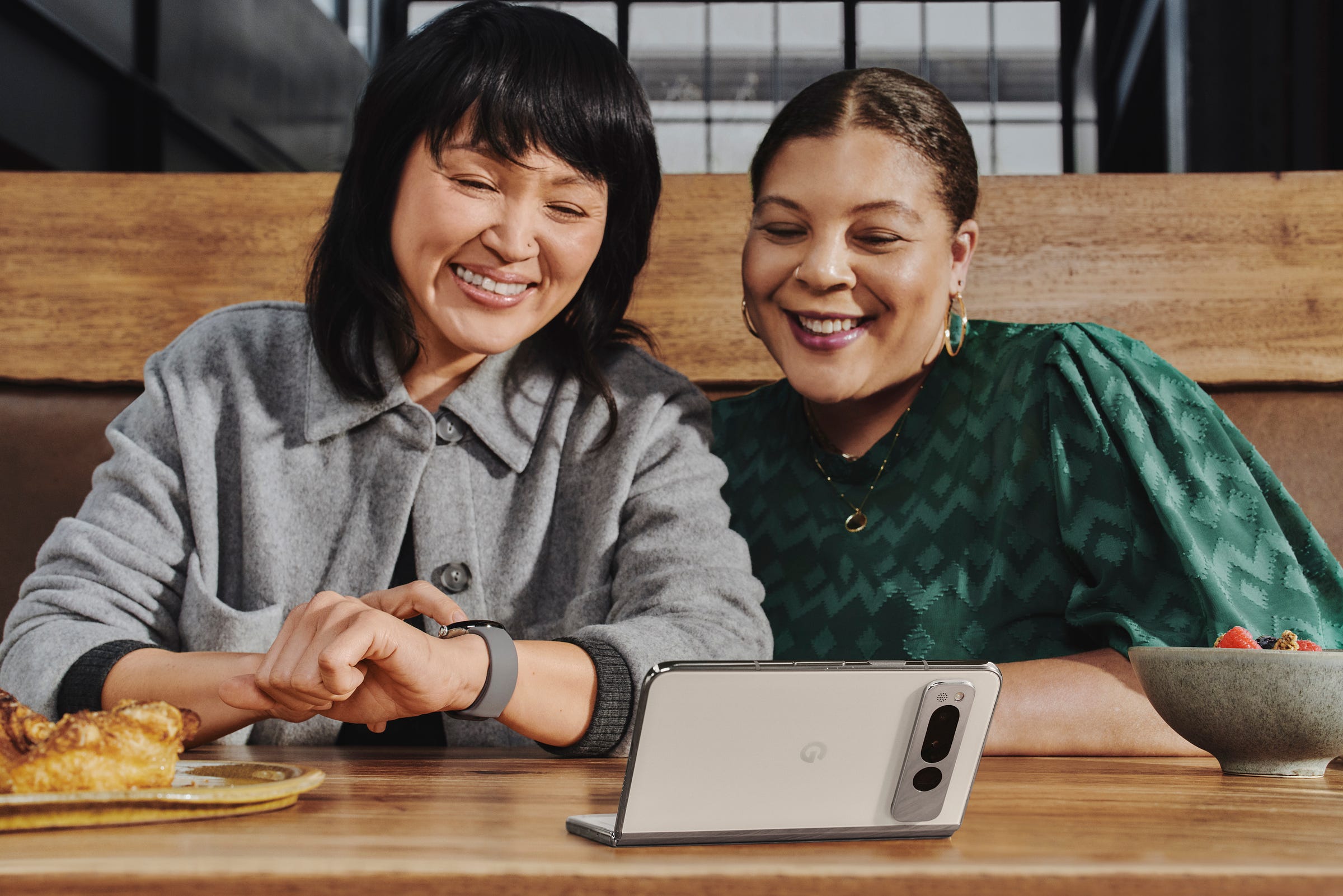
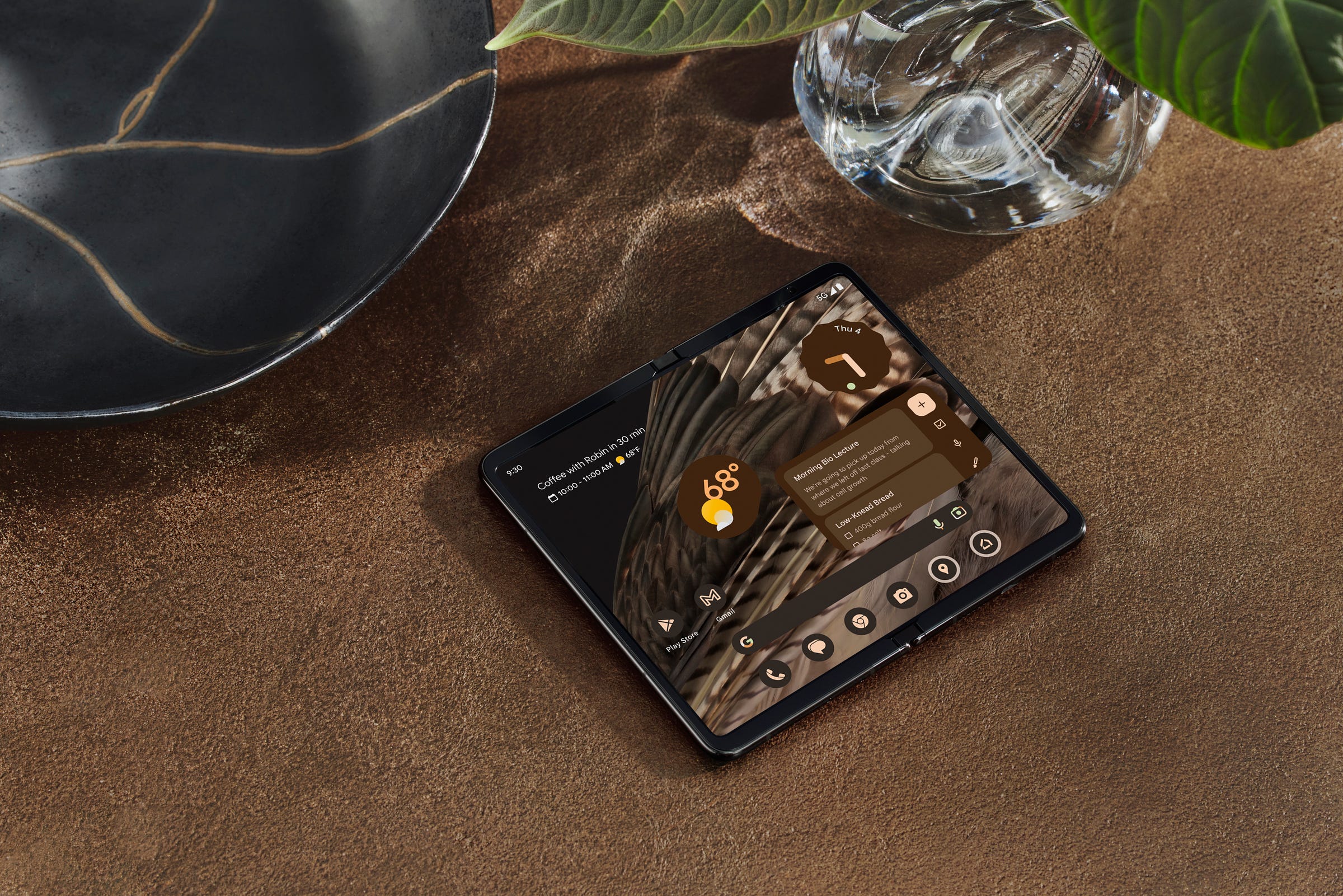
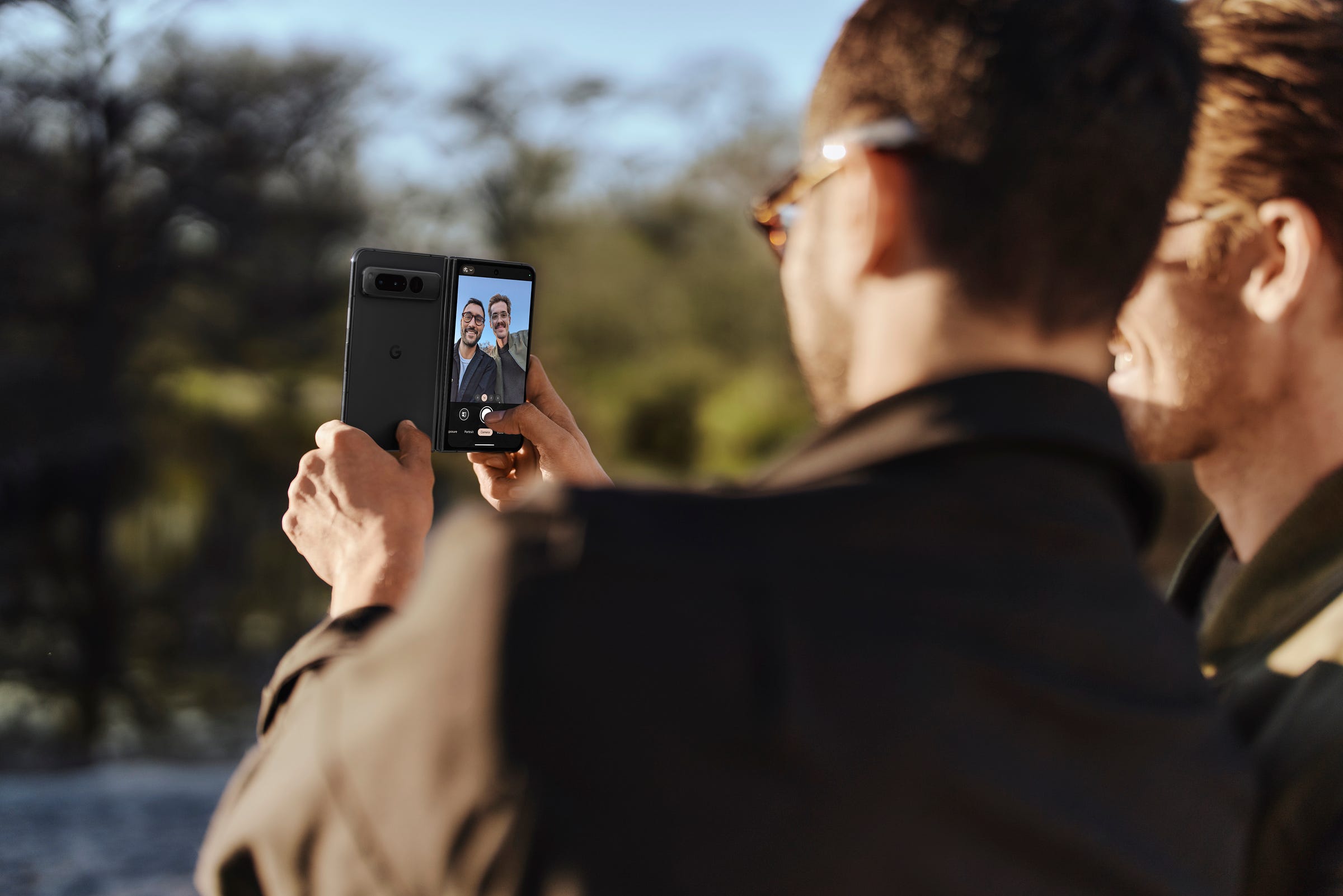


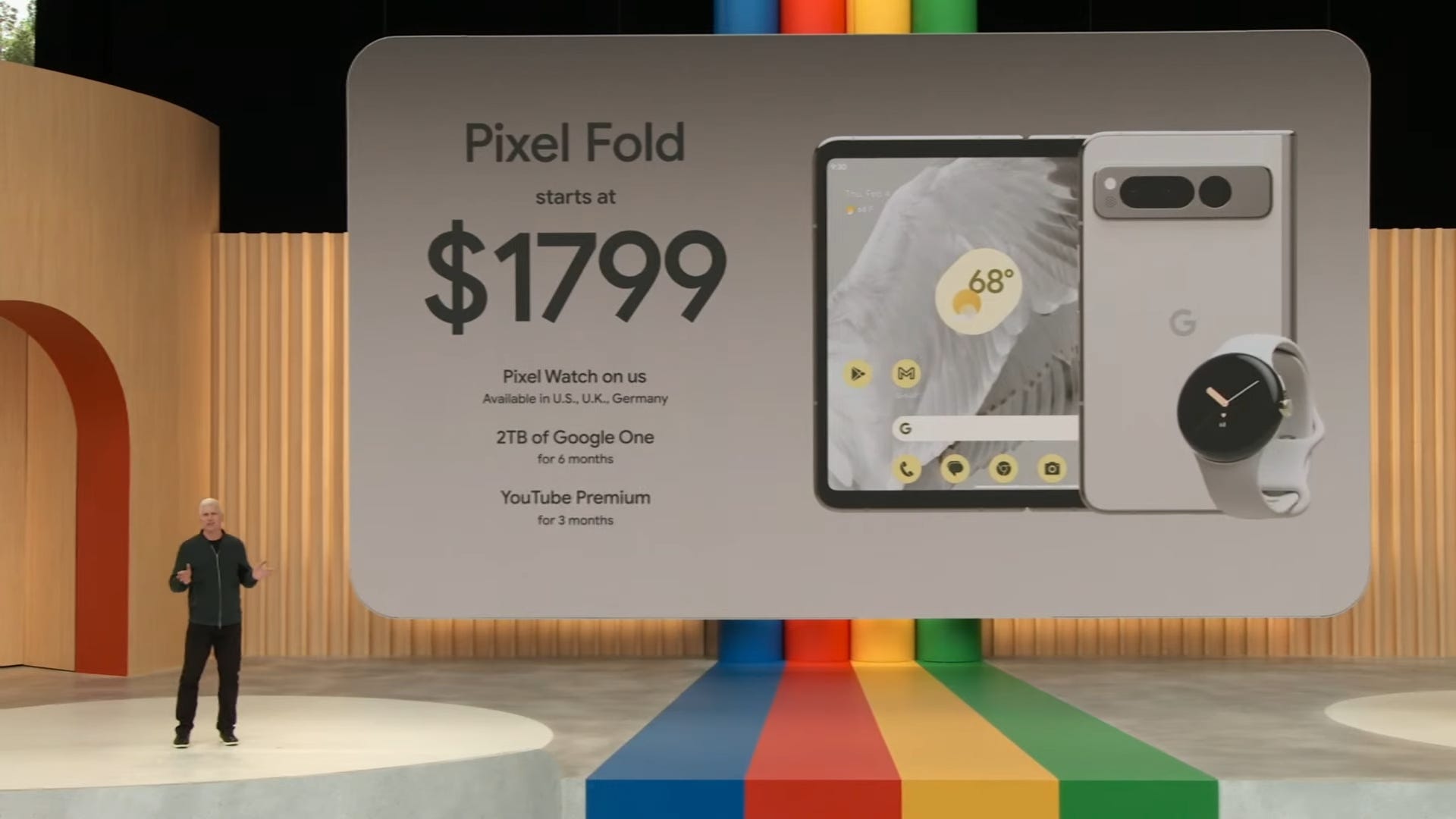
Hi! I apologize in advance if this is a stupid question, but will the Pixel Fold work with Backbone?